Featured Stories
The Day the Music Lived: How Buddy Holly Changed It All on February 3, 1959.
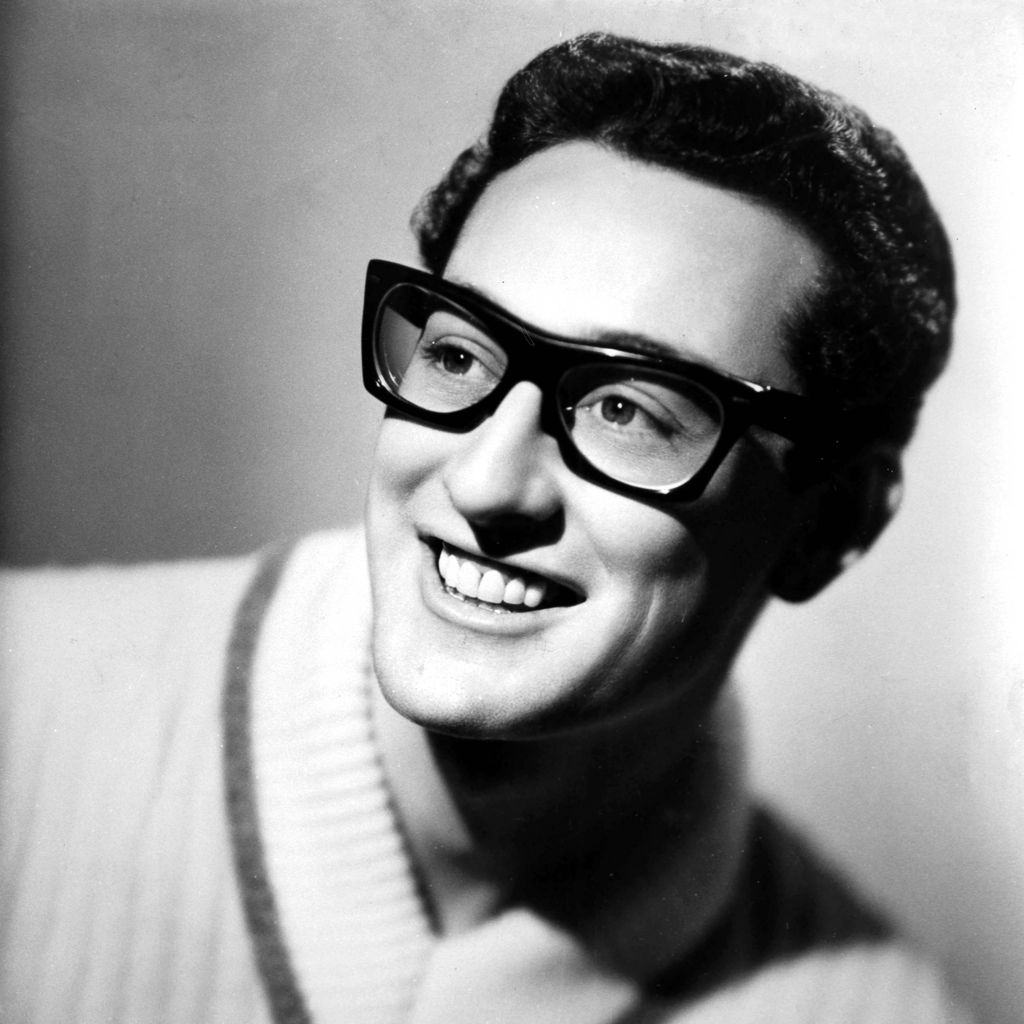
Buddy Holly
The tragic events in Clear Lake, Iowa, in 1959, have by now been engraved onto the heart of popular music as one of the darkest nights in history. The loss of Buddy Holly, J.P. Richardson aka the Big Bopper and Richie Valens created a national sense of grief as the sudden end came to careers that seemed to have endless possibilities. When the Beechcraft Bonanza was transformed into a fireball, crashing and skidding across the midwestern prairie onto the fire and ice, the site became a heavenly portal for three of rock music’s most promising artists.
Buddy Holly was the great ray of hope on the rock ‘n’ roll soundscape following scandals and diversions of its major artists that suggested the fledgling genre may have been running out of gas, although it had just left the garage. Elvis had been drafted into the army in late 1957 and was leaning heavily toward a Hollywood movie career that rendered his rock ‘n’ roll edge dull. Little Richard became a preacher; Jerry Lee Lewis was mired in the scandal of his marriage to his 13-year-old second cousin; and Chuck Berry, when he should have been at the top of the ladder of success, went to prison on a sex-related scandal.
Since he entered the scene, Buddy Holly came on clear-eyed, innocent, and ready to breathe fresh and original life into the genre, even as he drew from such diverse influences as Hank Williams, Chuck Berry, Bo Diddly, and Elvis. In appearance, he was non-threatening with his glasses, his lanky build, and signature hiccup vocal style. But even if he was public-friendly, he was also subversive as his Clovis recordings became a call to bring rock ‘n’ roll back to its roots. In 1959, Buddy Holly held the future of rock ‘n’ roll music in his hands.
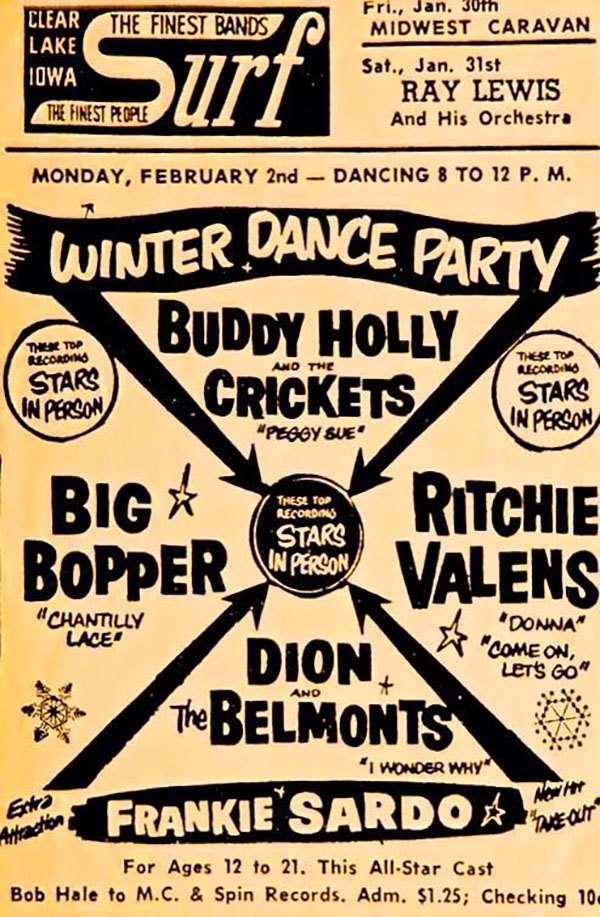
Winter Dance Party poster.
It was the business end of the music that led to Holly booking the grueling and nonsensical Winter Dance Party Tour. The tour became necessary because producer and self-proclaimed collaborator, Norman Petty, in Clovis, New Mexico, held back critically important publishing songwriting royalties from Holly. He was out of money and needed income. The tour was grueling because it was booked during one of the coldest winters in the history of the region. The booking company decided to cut costs by renting beaten school buses with faulty heating systems. The tour was nonsensical logistically because their bookings were made in a way that required the tour to crisscross the hard midwestern Winterland without rhyme or reason.
Many eyewitnesses to the tour describe how entertaining and memorable the shows were. YouTube is scattered with touching stories from the audience of that night. One story has a young Robert Zimmerman with his friend, Louis Kemp, at the Duluth Armory on January29, 1959. Dylan wrote that he was standing so close to Holly, they made eye contact. He said, “He looked me right straight dead in the eye, and he transmitted something. I didn’t know what. And it gave me chills.”
A few days later when the cavern reached Clear Lake, Iowa, Holly enlisted the Big Bopper and Richie Valens to charter a plane rather than make the three-hour trip by broken down and frigid buses. Young, newly licensed pilot Roger Petersen had not passed his instrument rating and so could only fly safely when the route visuals were clear. At 12:30am on February 3rd, a blizzard was moving across the route Petersen had planned. The oncoming storm had not been reported to Mason City Municipal Airport. After many years of speculation, it seems clear, the pilot’s lack of skill on the instrument panel led to such confusion, the pilot thought he was going up, when he headed to the ground.
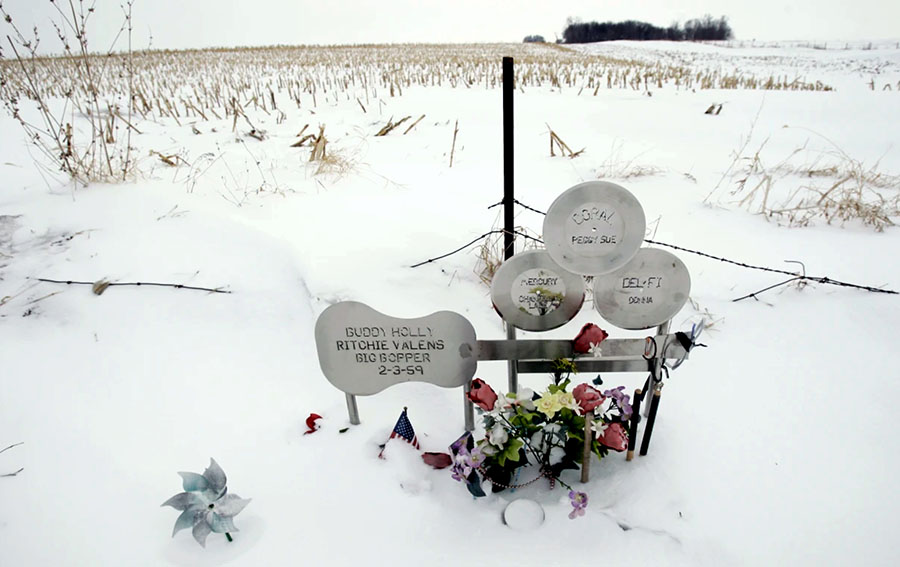
Years after the plane crash, a memorial was constructed to honor the three who died. Located near the site of the plane crash near Clear Lake.
But those who were left behind carried the icy ash and fire memories that ignited their passionate love for the music and drove them into new possibilities that may not have existed before that blue winter morning tragedy. Dion DiMucci would lead his Belmonts into great popular success; Waylon Jennings, who traded his seat on the plane on a coin toss bet, and Tommy Alsup found their way into their own legends.
But it is Bobby Vee whose story remains the most compelling of all.
If the age-old adage, “the show must go on,” inevitably had to come into play in the aftermath of the sudden death of these legends, the thought of carrying on with the February 3rd show in Moorhead, Minnesota, took the show business advice to new extremes. But the shock of the event triggered ticket demand, and the audience was curious about what would be left of the otherwise stellar package show.
Some wait a lifetime for the opportunity to have a shot at fame, but 15-year-old Robert Velline from Fargo, North Dakota, had no idea his time had come so young when he heard the announcement of the crash and the opportunity for auditions to play in the show, he had tickets for that evening. He called his older brother and guitarist, Bill, and a couple of other musicians and in a manner of hours, the young musicians were booked to take the place of Buddy Holly at the Winter Dance Party show in Moorhead, Minnesota, on February 3rd, 1959. In a matter of weeks, he would become nationally known as Bobby Vee.
In a recent phone conversation with Vee’s youngest son, rockabilly singer-songwriter, Robby Vee, his father’s memory of the events of the time remained clear throughout his life. He said Bobby Vee referred to it as a bittersweet life experience when “one star went down, another one went up.”
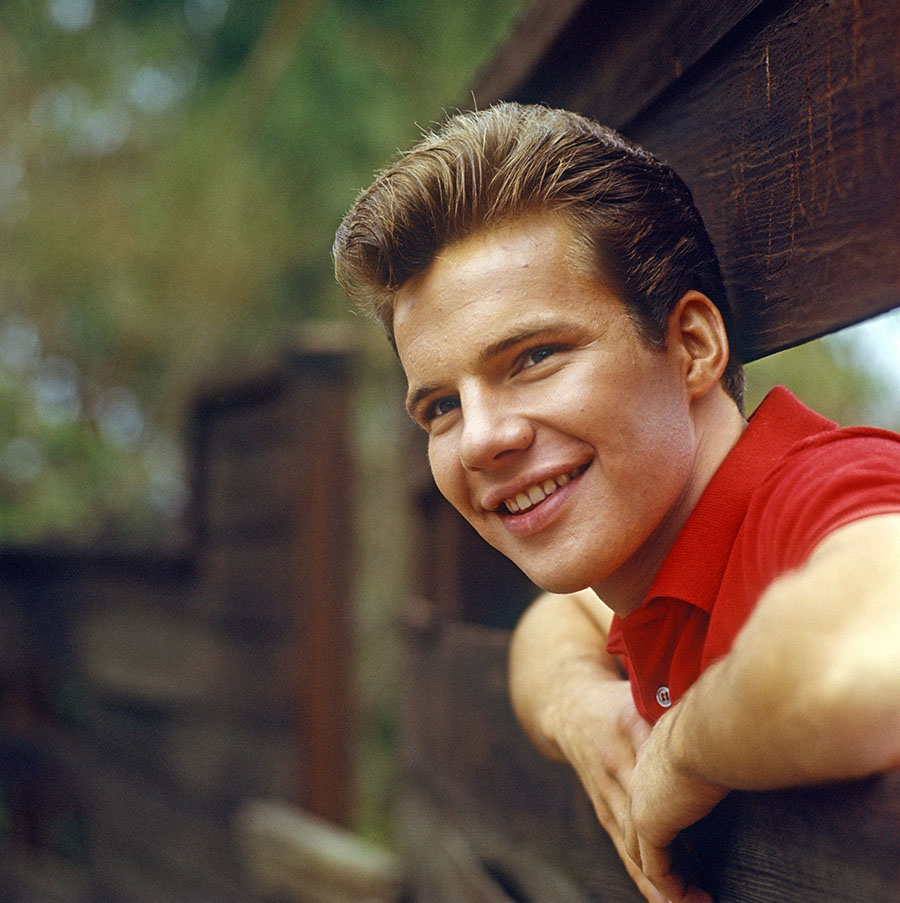
Bobby Vee ca. 1960.
According to Robby Vee, his dad described the Moorhead event on February 3rd as subdued. He said, “Waylon Jennings and Dion looked like the life had been taken out of them. Like zombies.” Vee told his son that he borrowed a guitar strap from Waylon Jennings for his set, which included songs by Little Richard, Gene Vincent, and the Everly Brothers.
But, purely inspired by Buddy Holly’s music wrote an original song, “Suzie Baby.”
A local manager was impressed by Vee’s performance (and the song) enough to purchase time at a local studio to record a demo of “Suzie Baby.” That session yielded Vee’s first nationally charted song and a regional hit. It also became his calling card into great success.
The story of the Moorhead concert and the historic recording was impressive enough to garner an invitation from Vee’s cousins in San Diego, California, to a sock hop, an informal dance party that could attract an abundance of teens and publicity. Promotional radio spots with clips of “Suzie Baby” had enough spark to attract the attention of Los Angeles record producer, a native from Lubbock, Texas and friend of Buddy Holly’s, Snuff Garrett. He heard the promotional clips on the radio and was moved by the resemblance he had to Buddy. Jerry Allison, Buddy Holly’s drummer, heard as well and was haunted by the soulful echo of their missing friend who seemed to be singing through this 15 year old from Fargo, North Dakota.
The natural thing for a successful musician and producer from Lubbock, Texas, Jerry Allison and Snuff Garrett respectively who were missing Buddy Holly, was to put young Bobby Vee in the same studio where Buddy found his musical success in Clovis, New Mexico. Several demos were recorded at Norman Petty’s historic sonic digs, but when Snuff Garrett and Norman Petty came to blows, Garrett moved Bobby Vee’s fortune to Los Angeles where he would sign with Liberty Records. The rest is rock ‘n’ roll history especially with the release of “Devil or Angel” and “Take Good Care of My Baby.” Over the next decade, according to Robby Vee, his father spent most of his time making records, touring, and raising a family. According to Billboard over the next ten years, he scored 14 Top 40 hits. But throughout his career, Vee remained solidly devoted to rockabilly and drew his greatest influence from the rock ‘n’ roll of the 1950s that fired his teenage soul and led him to the Moorhead stage in the wake of Buddy Holly death.
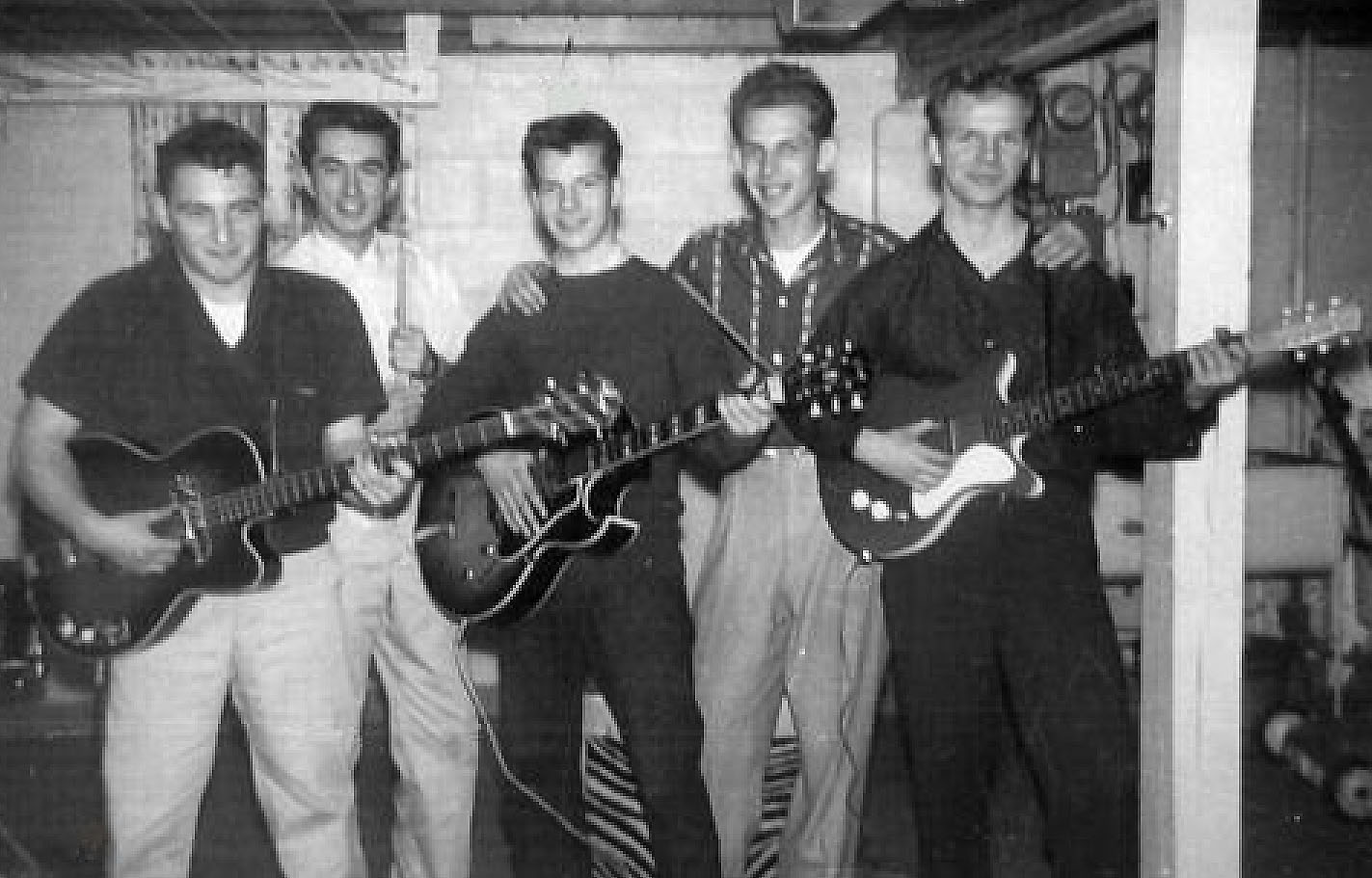
Bobby Vee’s first band, when he was 14 years old.
The turn toward pop-based music for Bobby Vee is not a surprise, considering it was the direction Buddy Holly was headed when he moved to New York City. Holly’s last recordings, especially “True Love Ways” and his cover of Paul Anka’s “Raining in my Heart,” must have pointed the way for Vee to move. But a close listen to Vee’s vocals on these early songs, Holly’s influence becomes crystal clear. He even brought in the trademark hiccup on the hit song, “Rubber Ball.”
In the first year of his successful career, Bobby Vee, while taking live bookings in the Midwest, ran across a young musician who went by the name Elston Gunnn. The musician offered his piano services, warning he could only play in the key of C. According to Vee, Dylan played two shows and then disappeared. A few years later, while in New York City, Vee saw Gunnn on a poster in a record store under the name, Bob Dylan. Later, Vee would learn that in 1960, following the regional success of “Suzie Baby,” Bob Dylan introduced himself as Bobby Vee. According to Robby Vee, Dylan told Bobby in 2013 that Vee taught him how to connect with the audience.
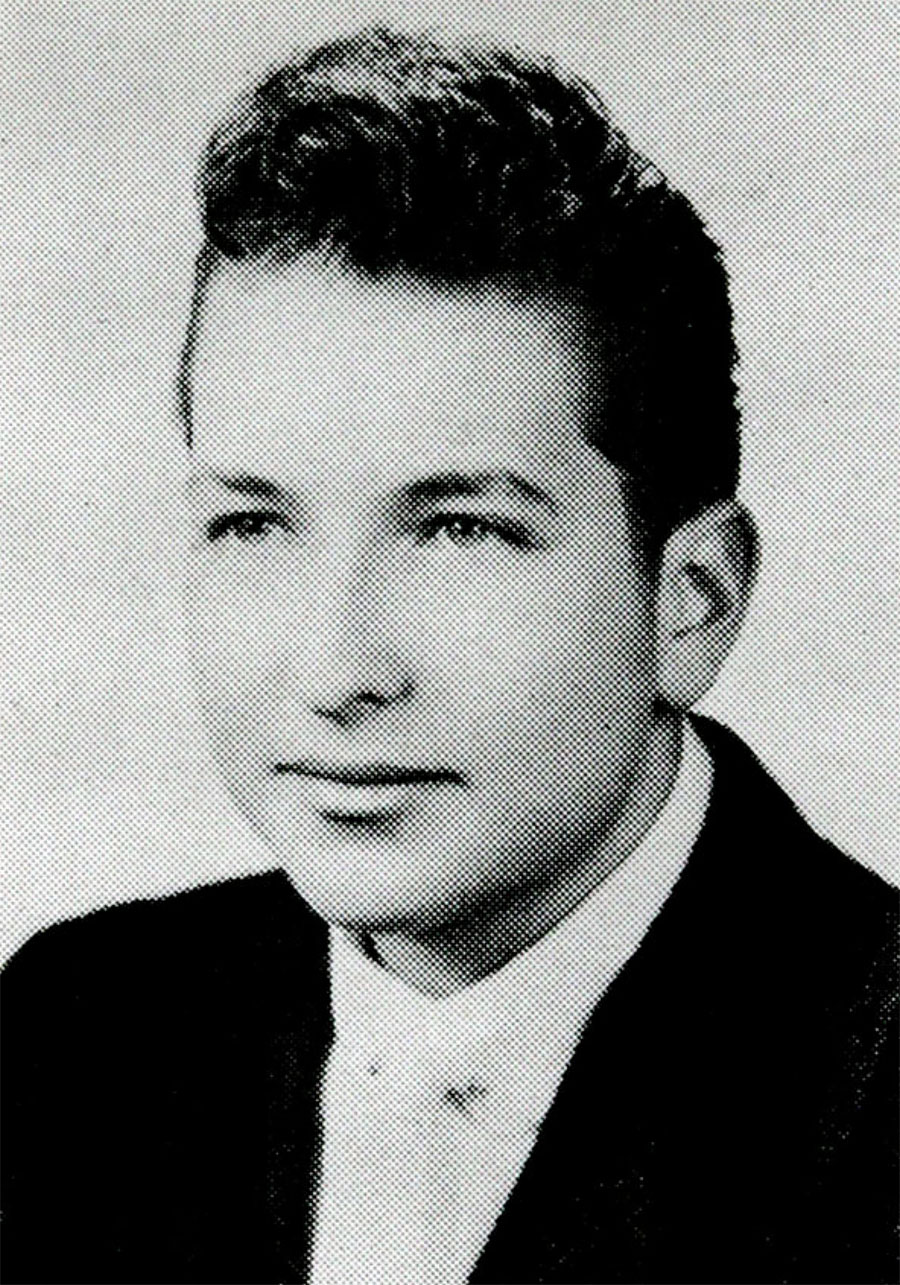
Bob Dylan in 1959, the year he spent in Fargo and met Bobby Vee.
While most of the survivors of the Winter Dance Party in 1959 tour are accounted for and have retired or passed on to their heavenly reward in rock ‘n’ roll heaven, they have left legacies that show the influence of the Winter Dance Party. Beyond those witnesses who were there in 1959, the effects of the music that thrived thereafter is evidenced by the next generation. This is became clear when four lads in Liverpool, England, decided to bring Holly’s influence into their music and a slight hint in their name, the Beatles. Of course, Gram Nash’s original band was less subtle simply naming them, the Hollies. In America the Bobby Fuller Four scored a major hit in 1965 with “I Fought the Law,” a song originally written by Sonny Curtis and recorded by his band, the Crickets, five years earlier. Waylon Jennings, who led the groundbreaking Outlaw Country Music Movement did it one better by including the Crickets on the album I’ve Always Been Crazy with the Holly classics. Dion and the Belmonts forged a hard-New York rock edge of their own, which influenced iconic artists like Bruce Springsteen and Lou Reed, eventually finding his best work in 1961 with hits like “The Wanderer” and “Runaround Sue.”
But Bobby Vee, the impact of Buddy Holly’s demise is less known. The extent of his success from 1959 to 1967, including a long-term association with Dick Clark’s Caravan of Stars, is overlooked. He continued touring and eventually found his way to nostalgic package shows. But over the years he experienced periods of great creativity that have gone unnoticed.
In 1972 he stripped away the pop music veneer on the album, Nothin’ Like a Sunny Day with nine original songs that blend country, rock, and gospel with a clear singer-songwriter’s sensibility. The session work is subtle, authentic, and streams with fine harmonies, which includes Les Emmerson (Five Man Electrical Band) on harmonica and session legend Dean Parks on lead guitar. His voice is at ease with the broadening of his style comfortably breaking away from pop-rock of his most familiar sound. It’s an overlooked gem that richly deserves to be rediscovered by the Americana-roots scene today.
Eventually, Vee returned to Minnesota, where he raised his family and established Rockhouse Promotions and Recording Studio, a musical roots-music paradise, managed today by his family, including his daughter and three songs.
In 2011 Bobby Vee was diagnosed with Alzheimer’s disease. Even so, his love for music and his joy in making it continued to his passing in 2016.
During our phone conversation, Bobby’s son Robby Vee is a singer-songwriter who has carried on his father’s and his own legacy with grace and tenacity. He was so engaging it was palpable, telling his stories with such a sense of love, respect, and consideration for the continuity of his father’s legacy. Robby Vee is a fine rockabilly artist who is equal to the task of surf guitar and pop ballads worthy of his father’s legacy. His talent and his love for his father and his music is strong and well-articulated. This was never more pronounced then when he told the story of his father’s reunion with Bob Dylan in St. Paul in 2013.
Vee said, “I promised to take him to see Dylan for his 70th birthday. I’d just come off the road and was tired. I’d forgotten about the promise until my mom reminded me. I called Dylan’s management and within 20 minutes received a call from his brother, David. He said Bob was excited to see Dad. He asked how he was doing and if he would be available to meet after the show. A short while after that, Dad and I were on the phone with Bob Dylan from his tour bus.”
As Robby Vee told it, Dylan and his brother David arranged to find them after they were seated at the show and then brought them sit to the side of the stage near where Dylan played keyboards. Dylan gave a beautiful acknowledgment of his love for Bobby Vee during the show, calling Bobby Vee “the most beautiful person I ever shared the stage with.” He then sang “Suzie Baby.”
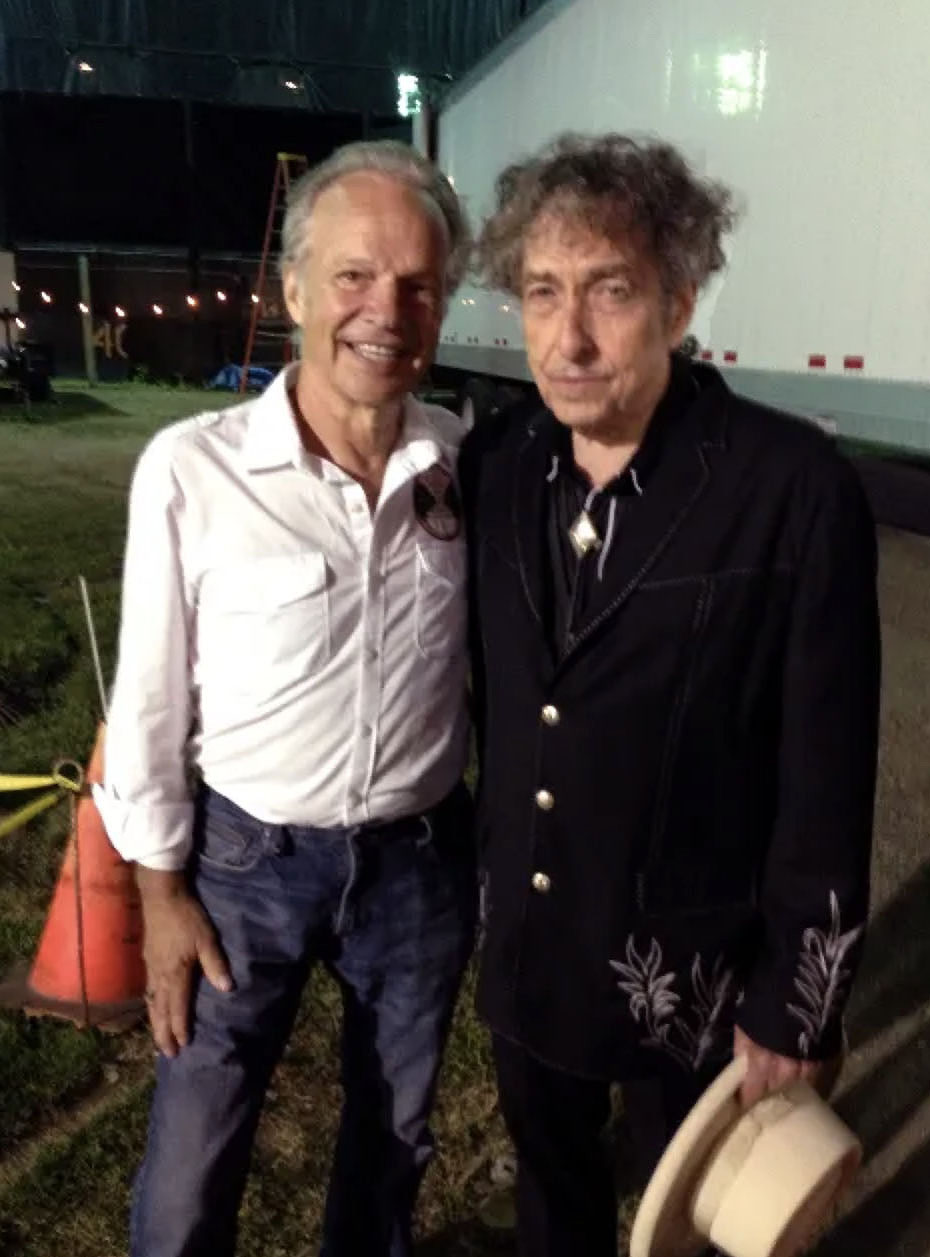
Bobby Vee and Bob Dylan reunited after the 2013 concert.
After the show Dylan and the Vees spent an hour reminiscing about their time in music on his bus. Robby said, “Dylan told dad that even though they started at exactly the same time and place, their careers took different paths. But he said he always followed dad’s career. And he told dad that he taught him how to connect with the audience in those early gigs.” Bob Dylan truly honored Bobby Vee that night in 2013.
During that conversation Robby Vee felt that the two men and legends became, not stars, but two Midwestern kids just starting out. He could see this from them both. There was no sense of the cool and detached Dylan at this meeting; rather, he was just a Midwestern kid who was as ready to go fishing as he was to play music.
The story of Buddy Holly and the aftermath of the tragedy of the Winter Dance Party is as much about grace as it is about art and music. If music is a stream that runs from the heart of the Divine, from God, then these moments that still resonate 65 years later, from the fireball in the winter sky in 1959 to the warm embrace by Bob Dylan for Bobby Vee when he was in the grip of Alzheimer’s disease, are an awakening into a universal spirit that overcomes tragic loss and runs with love and healing through life. The music that streamed from Buddy Holly, the Big Bopper, and Richie Valens then went down in flames and became known in as “the day the music died.” It is much more than this. It is in truth the day the music lived. It merely changed directions and flowed out in other forms into the heart of American music.
Robby Vee is currently promoting his new album, Double Spin, which includes the single he co-wrote with Bobby Vee, called “Good Morning.” He is also working on a collaborative release with John (“Beej”) Chaney of the Suburbs on an album to be released in 2024.
There will be a Winter Dance Party tribute show:—The Day the Music Lived—at the Fret House in Covina on February 3, featuring Ronnie Mack, John York, and Matt Cartsonis.






